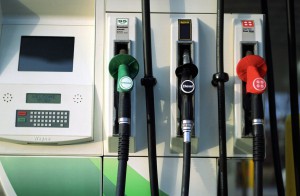Retail U.S. gas prices have taken another big tumble this month, and could drop sharply before year-end, according to various fuel industry analysts.
American motorists could wind up saving as much as $2.5 billion if the trend holds, according to tracking service GasBuddy.com, money that it expects will help fuel the country’s ongoing economic recovery.
A survey by analyst Trilby Lundberg found that a gallon of regular gasoline has dipped by 9 cents during the last two weeks, while the numbers are down 34 cents since the beginning of summer. GasBuddy, meanwhile, is predicting the downward trend will continue.
It anticipates fuel costs will fall another 20 cents at the pump, which would bring prices down to a level American drivers haven’t seen since 2010.
The website says that prices have fallen to a national average of $3.37 for a gallon of regular unleaded gas. Mississippi had the lowest price of any state as the week started out, a modest $3.069 per gallon. At the other extreme, Hawaiian motorists were paying $4.241. Among the contiguous 48 states, Oregon had the dubious honor of being the most expensive, at $3.752.
Drivers in Spartanburg, South Carolina, meanwhile, could score the lowest-priced fuel, according to GasBuddy, at a $3.031, while Honolulu, at $4.173, and San Francisco, at $3.900, topped the scales.
The decline in fuel prices might come as a surprise to some, considering the ongoing turmoil in the Middle East. The radical Islamic group ISIS currently controls a number of key oil fields in Syria and Iraq – with the U.S. and its allies hoping to cut off that flow to starve the terrorist organization of cash. But traders appear to be taking into account the expansion in alternatives sources that make the threat of a Mideast supply disruption unlikely, analysts say.
Meanwhile, Lundberg noted that the price in gasoline has been impacted by a sharp decline in the cost of ethanol. Federal law requires refiners to blend in a share of that alcohol-based fuel, so a drop in ethanol has a rapid impact on pump prices.
Refiners also are in the midst of switching over to winter-grade gasoline, which is generally cheaper to produce.
(Gas prices falling despite unrest in Middle East. For more, Click Here.)
Meanwhile, with schools open again, families are traveling less, reducing demand for petroleum. Last week, the U.S. Energy Department reported a rise in crude oil supplies, surprising traders who had anticipated a slight decline.
(Click Here for a look at the newest Honda CR-V.)
“There just aren’t a lot of factors that will take crude higher right now. The market is well-supplied and geopolitical issues don’t appear to be too threatening,” Anthony Grisanti, president of GRZ Energy, told CNBC.
(To see more about the recall parade marching on, Click Here.)
He also pointed to rising production in the U.S. as a factor holding down fuel prices. A strong supply has led to an 11% drop in the price of West Texas Intermediate crude over the past three months. That has helped drive down costs at the retail level, as well, noted Grisanti.
Various reports from oil industry observers have predicted that national gas prices could dip to as little as $3.15 to $3.25 per gallon in the weeks ahead, while as many as 30 states could soon see regular unleaded pumping at less than $3.00.


Now U.S. fuel prices are only $2/gal. too high.
Watch most of our oil wells shut down at the price point you want…